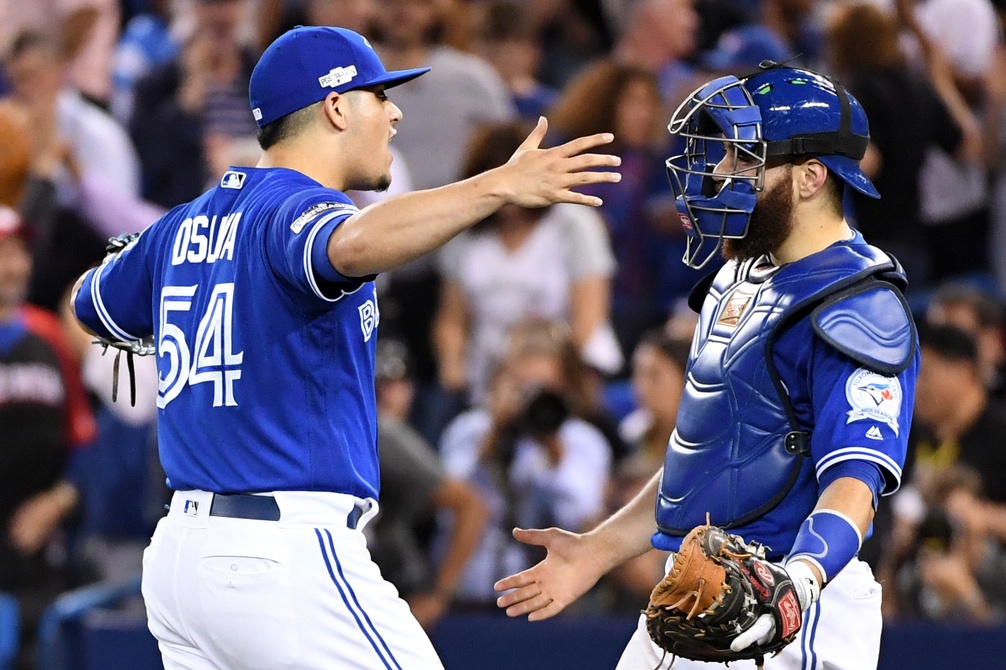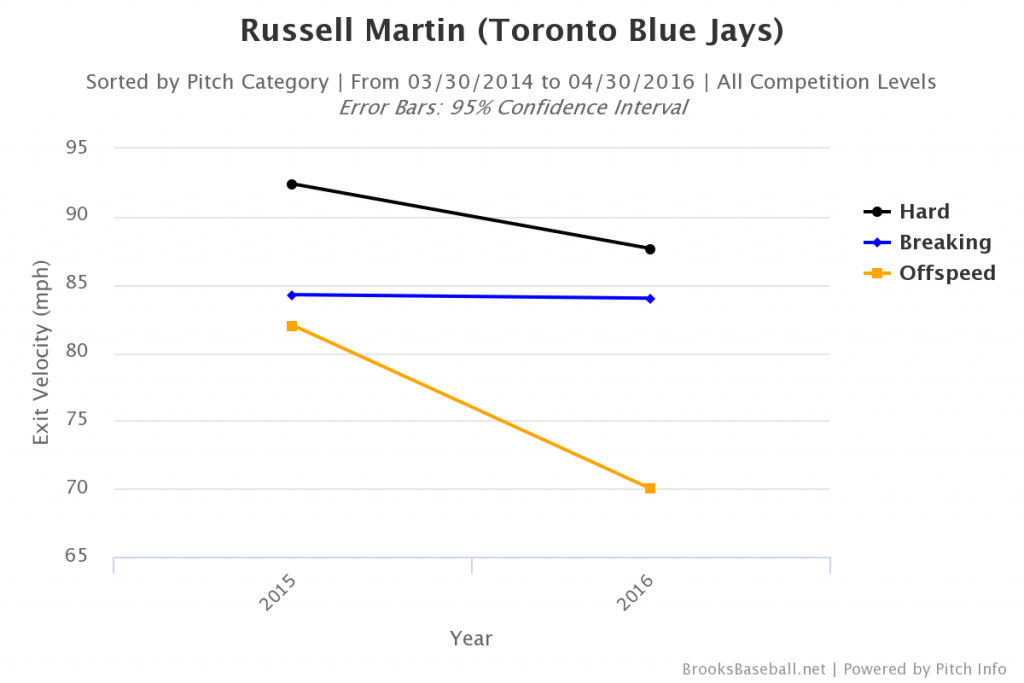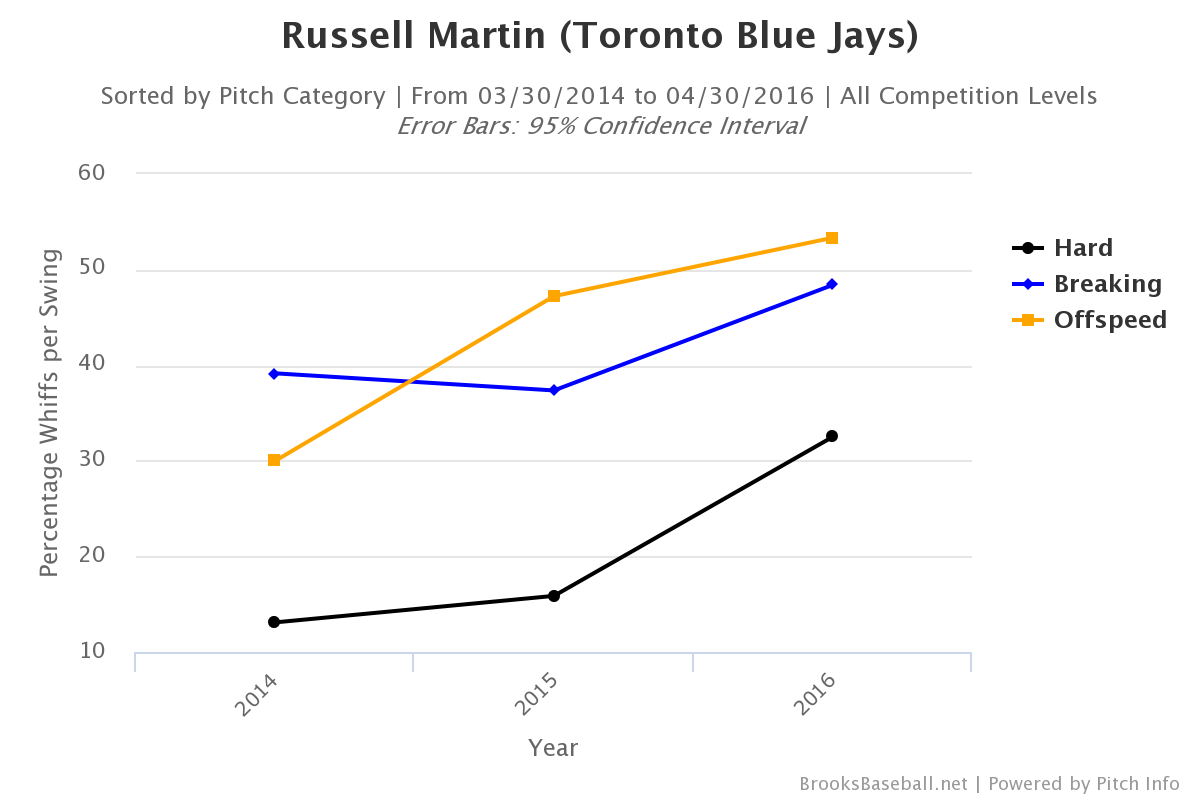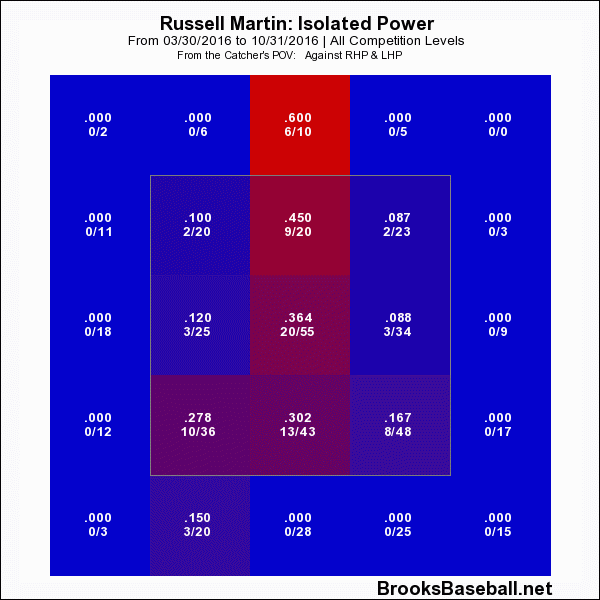Russell Martin is the best catcher that has ever played for the Blue Jays, and he’s a stark contrast for a history littered with with fan favourites, defensive wizards who couldn’t hit, the occasional serviceable veteran who put in a few good years, and several catchers-of-the-future who never quite lived up to their billing. It’s been a tough spot for the team to fill historically, and the team has never had someone as capable as Martin suiting up behind the plate.
When the Jays signed Martin to a five year, 85 million dollar deal prior to the 2015 season, the understanding was that the team would compete soon. He would be 32 before he took his first at-bat with the team, and catchers age faster than most players. No matter how well Martin kept himself in shape, he wouldn’t be able to outrun time forever. The understanding was simple: they were paying for an elite catcher on the front end of the contract, one that would help the Jays become contenders, and hoping that his athleticism insulated them against the decline as long as it could.
We saw the first signs of that decline last season on offense, as Martin had several long stretches where he simply could not hit. This could be explained away with injury, as he had that neck issue that hampered him early in the season, but the injury itself was only part of the problem: older players get hurt more. Even as the Jays smartly kept him away from R.A. Dickey’s knuckleball, there were still opportunities for Martin to get hurt in the normal day-to-day of being a catcher. With an older player at a demanding position, we can’t simply wave away the injury. It affected Martin’s ability to contribute offensively and it could change how we view Russell going forward.
A decline in exit velocity and an increase in swings-and-misses (see graphs above) are normal trends for players as they get older. Russell Martin was far from the only culprit during a disappointing season for the Jays’ offense, but the length of his early season struggles (and their muted return late in the season and in the playoffs) was a visible anchor in the lineup. As such the Jays were forced to move him down in the order. He’s become easier to pitch to as well. Consider his isolated power profile from 2014-2015, and the one below it from 2016:
Once a notorious high-ball hitter, Martin has become someone you can get out with a solid plan. The book is soft stuff that isn’t middle-middle, a game plan Cleveland deployed against the Jays very well in the playoffs. Watching Martin come up with runners on base became a depressing inevitability: he went 2-for-17 with 9 strikeouts in the ALCS.
We certainly shouldn’t ignore Martin’s full contributions. He was signed partially for his defense and handling of pitchers, which still grades out well. For all the hand-wringing about Marco Estrada losing his personal catcher, Martin came in and Estrada didn’t lose a beat, en route to an All-Star appearance. Baseball Prospectus has Martin as the seventh best catcher in baseball by WARP, and there aren’t many catchers his age in the top tier. Those who are in similar ages and contract brackets reinforce our point, however.
Consider Yadier Molina and Brian McCann, 5th and 14th on the list respectively. Molina is similar to Martin: a good reputation both offensively and defensively, and has been great for many years. But even he had struggled the last two seasons with injury, before rebounding to 4.0 WARP in 2016. McCann’s primary value was offense when he a signed a six year contract with the Yankees prior to the 2014 season. His bat has declined to the point where they traded him to the Astros this offseason.
In an off-season where the Jays could lose two franchise-altering bats, the team has to be concerned about the trends they see in Martin’s hitting. There are ways the team can help that. Better depth at the position would be great, as they lacked a decent backup for the entire season. That kind of depth could lead to more days off for Martin, giving him a little more spring in his step, but it’s a tricky balance. The team wants to justify it’s investment in their catcher, but also not to overspend at a position they already have a lot of money committed.
A catching prospect who’s ready for a taste of the bigs would be ideal given Martin’s timeline, but their troubled history with catcher-of-the-future types has bitten them here. A.J. Jimenez has bounced on and off the 40 man recently, and newly acquired Reese McGuire isn’t close and may not be anyone’s idea of a starting catcher. So there may not be much help on the way here either.
Again, to be clear: Russell Martin is the best catcher the Jays have ever had, and he’s still one of the best catchers in baseball. However, there are holes in his game, and if the Jays want to contend again in 2017, they’d be wise to work around some of his limitations. An actual, functional backup catcher would be one way, limiting his wear and tear as the season goes along. Some more bats to reduce his responsibility on the lineup would be another. Better injury luck might help as well, but it’s hard to see his odds getting better on that front as he gets older. Martin is a key piece of the Jays’ puzzle over the next few years, and the team will have to be realistic as to how he best fits.
Lead Photo: Nick Turchiaro-USA TODAY Sports





How many backup catchers fulfil the desired “actual functional” description and are available at a cost the Jays would be content to pay? The key problem is that the market basically only offers a variety of “pick your poison” options.
Yeah, they’ll run into the “most backup catchers are bad” problem. I wonder if they try for someone more offensively inclined, who you could pinch-hit occasionally.